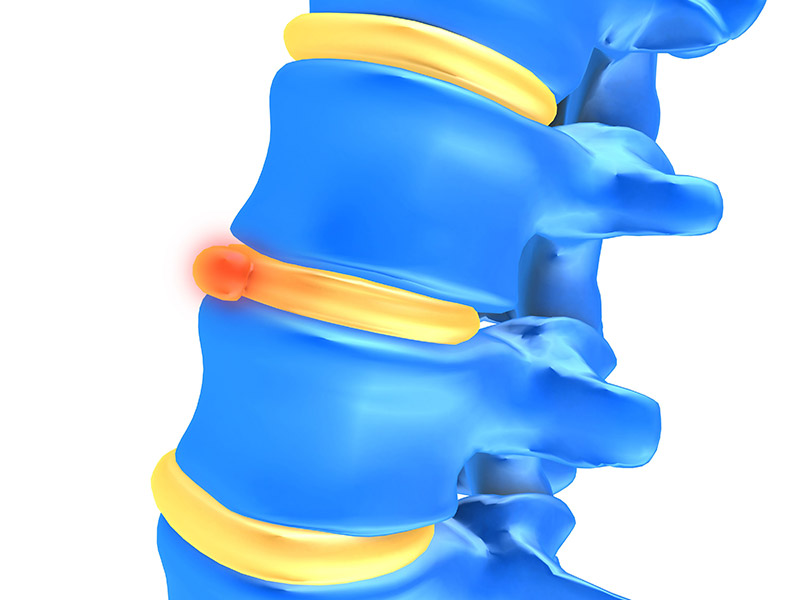In relation to back pain, everyone has heard of the mysterious “slipped disc”. Everyone has also heard of the bogey man. Guess what – neither one exists. All too often there is a misdiagnosis or a lack of understanding in relation to how the disc is attached to the two adjacent vertebrae, and the label or misnomer “slipped disc” gets put on a malady with a very different and very specific origin.
First of all, discs can’t slip. Intervertebral discs are cartilaginous joints between all vertebrae above the sacrum (tail bone) and serve as a cushion between these bones as the body goes through the motions of daily life. The disc is firmly attached to the vertebrae above and below it.Between each disc and vertebral body are “cartilaginous End Plates” which form extensions or “hooks” that firmly anchor the disc to the vertebral body. So, although a disc may degenerate, or prolapse, it cannot slip.
The disc is nonetheless a structure that warrants close attention. A disc protrusion, commonly referred to as a disc “bulge” or disc herniation is a very real diagnosis that can genuinely affect one’s quality of life. Of all the structures in the spine, the disc carries the greatest responsibility for the preservation or function of the vertebral column.
Let’s think of the disc in the common terms of the “jelly donut” as it is sometimes referred to. The disc, or donut, has two parts – these being the inner nucleus jelly filling), and the outer annulus fibrosis (the outer layers and glaze of the donut). In a disc bulge, the outer donut remains intact; the jelly has just slid towards the back of the donut and is putting extra pressure there. In a disc herniation, the outer layers of the donut break open and the jelly filling may slide through to lie underneath the spine’s posterior ligament (for all you medical students out there). The disc has not slipped – it has blown out of one of its outer layers, like the Hulk busts out of his shirt. The remainder of the disc still provides some cushion – although much less than before.
Now lets move to the outside of the vertebral column, where our bulge can now irritate some of the little tiny nerve roots or, if the bulge is large enough, it can “pinch” the nerve itself. Well, nerves don’t like being pushed, or pinched. They get pissed. So they scream. In tum, so do you.This is the wonderful world of the disc herniation. Sound like fun? Guess what – it’s not …
If we listen closely to those nerve fibers, we’ll see just how unhappy they are about your recent efforts on the bench press. Not only do they stab you in the back, sometimes they even gossip with their friends in your glutes, who in turn pass the message all the way down your legs. Now everyone is screaming .. That’s sciatica. It’s really neat. You might think it sounds like a good time, but not so much when the party is going on in your extremities.
Sciatica, due to a disc bulge gets its gas from inflammation in the area. When the inflammation resolves, the pain magically disappears. One would think the bulge has also magically healed. In fact, this is not the case.The protrusion can remain without causing any symptoms whatsoever.Inflammation can become the ringleader for instigating your new hobby of going to the doctor to find some sort of relief.
Want to avoid all of this nonsense? Listen to your back! Lift responsibly! If you hurt your back, or have any symptoms that radiate down your buttocks or legs, get to your doctor or physical therapist to determine the source of your back pain and learn how to avoid re-inflaming the area again and again. If the doctor tells you that you slipped a disc, turn the table on her/him by inquiring how they made it through medical school. Because now you know – there is no such thing as a slipped disc.
— Contributed by Deborah Denio, DPT, MTC, CSCS, IFBB Figure Professional

